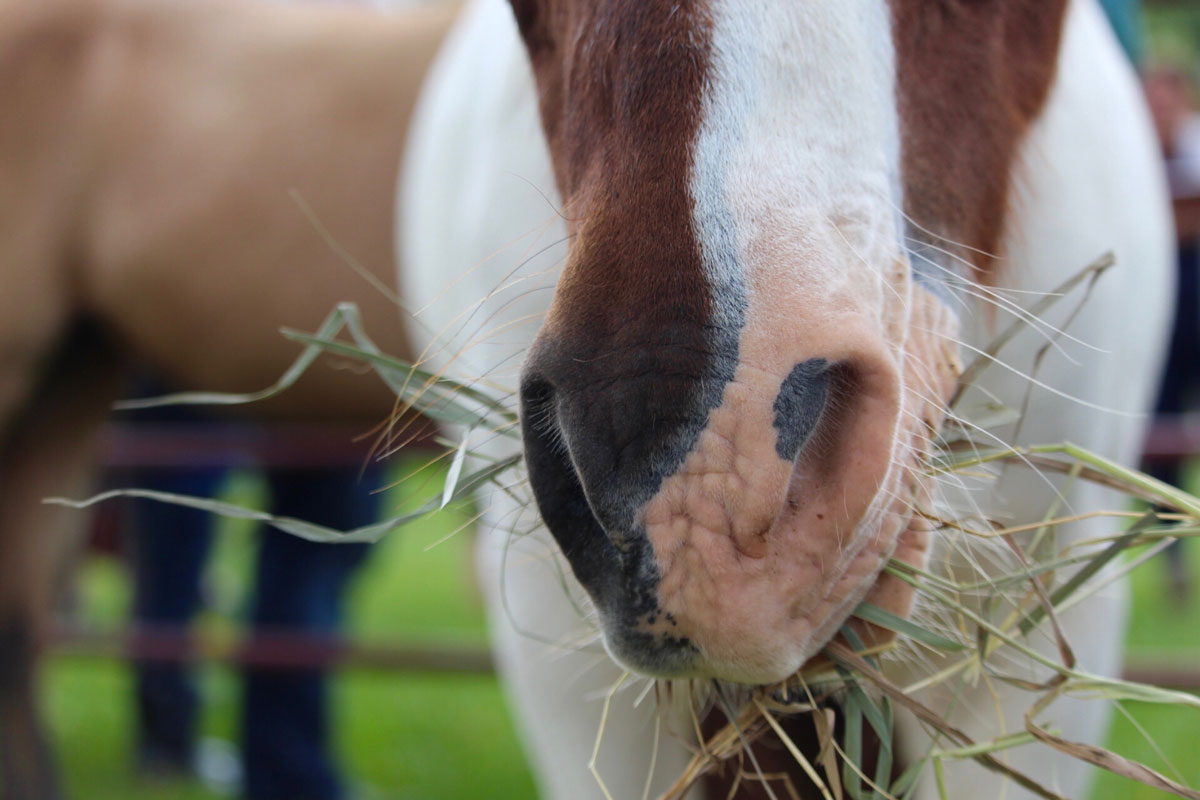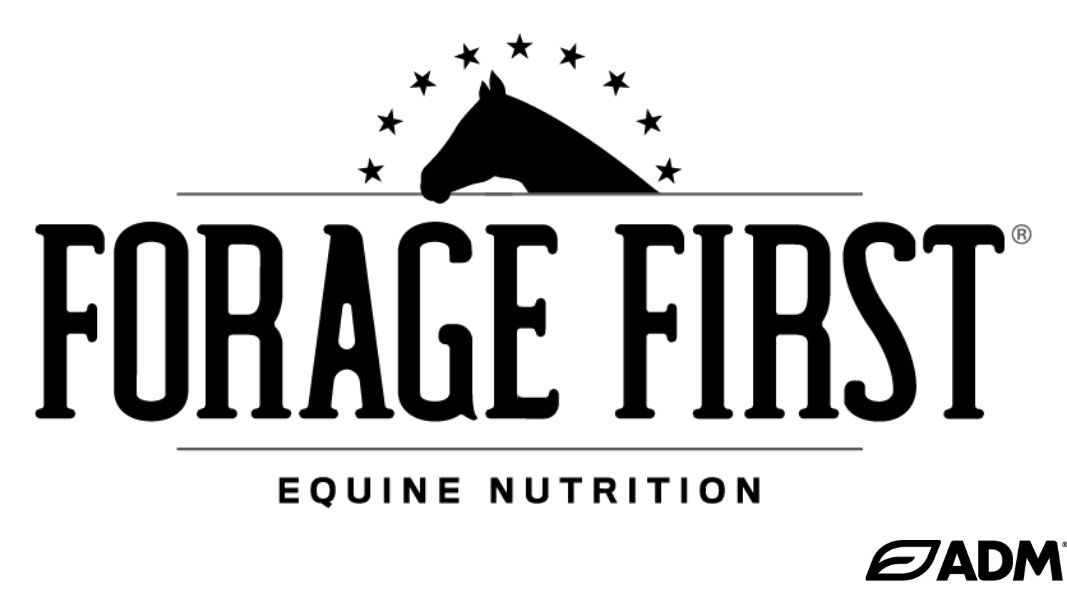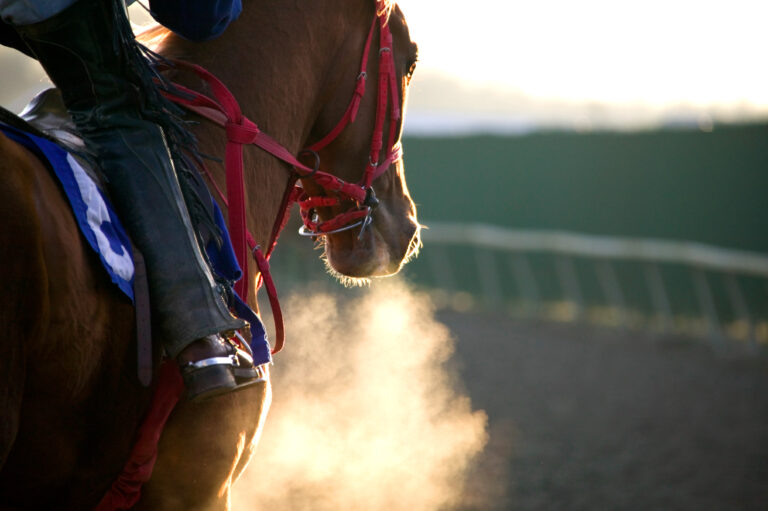
Google the phrase “daily nutrition needs for people” and a standard answer pops up—2,000 calories per day for the average person. Weight loss, physical training, age and health conditions might mean cutting back or increasing intake to maintain a healthy status. Apps, personal trainers and nutritionists can offer insights into custom tailoring daily diets to match a person’s lifestyle.
This article is brought to you by ADM Animal Nutrition
Building a horse’s diet—especially for a hard-working performance horse— follows the same principles. As physical fitness improves and activity increases, more nutrients are needed to fuel the horse’s body. However, the adage “if a little is good, more is better” does not necessarily apply to feeding horses. Accurately understanding the animals’ workload is key.
Laurie Lawrence, PhD, a professor of equine nutrition at the University of Kentucky, has observed many horse owners and trainers overestimate the amount of work their horses perform. As a result, many horses are over-fed calories and other nutrients. Except for elite race and competition horses, most performance horses are not performing what the National Research Council (NRC) describes as heavy or very heavy work, Lawrence stated.
The NRC defines light exercise as one to three hours a week, limited to walking and trotting. Many recreational horses fall into this category. As exercise increases to three to five hours per week, it is described as moderate. The workouts are mostly trotting with some walking, some cantering and possibly some jumping or other type of more difficult activity. Ranch horses, show horses and trail riding horses frequently fall into this category. Racehorses and elite athletes in endurance or three-day eventing are classified as being in heavy work.
Another misperception Lawrence has heard is that commercially manufactured feeds do not provide adequate minerals and that supplements are needed.
“Other than electrolytes, additional supplementation of minerals is rarely needed if a horse is getting at least four to five pounds per day of a feed formulated for performance horses in addition to good-quality forage,” she said.
Energy Needs of Horses
The biggest challenge in designing a horse’s diet is deciding just how much energy is needed, said Bob Coleman, PhD, PAS, an associate professor and an equine extension specialist at the University of Kentucky.
“In general, you need to consider the horse’s maintenance needs,” he said. “Then add in the energy required for the work being done. You might possibly be adding in, or at least considering, additional energy needs a horse may experience during travel.”
Lawrence and Coleman point to the “NRC for Horses 2007” as a guideline for counseling clients with nutrition questions for their performance horses. The tool calculates feeding recommendations based on a combination of forages and concentrates to meet that horse’s energy requirements. The weights are in metric, so you might need some mathematical adjustments. For reference, each kilogram equals 2.2 pounds.
“Horse owners need to think about the horses they are feeding and maybe not worry too much about comparing their horses to other classes of horses,” he said.
Nutrient Needs
All horses, regardless of breed or discipline, require the same nutrients. Calories, crude protein, minerals and vitamins support overall wellness. The differences between horses arise based on the activity each horse is performing
“The nutrient requirements do not vary across disciplines, but how we might meet those requirements can change,” Coleman said. “What we are going to use to provide the calorie needs of the performance horse might be different based on the length and intensity of the activity.”
For example, an endurance horse benefits from a diet with more digestible Fiber and some added fat. Horses expected to engage in intensive sprinting activities, cutting, racing and other speed events could use readily available starch in their diet to fuel the fast-twitch muscle movements.
A three-day event horse must have the nutrients to support both. The dressage phase includes a degree of intensity, but less so than the cross-country phase, which can burn through stored energy reserves. The challenging stadium jumping phase after cross-country leaves little time to replenish those reserves.
“Nutrition comes down to understanding the metabolism of the various energy sources in relation to the activity being performed,” Coleman said. “Another good example is a cutting horse at a major event where there can be multiple go-rounds over a number of days. We need to consider the energy needs so that when we hit the finals, there is gas in the tank.”
Hold the Starch, Add the Fat
Throughout the last 20 years, there has been a growing reluctance to use feeds with soluble carbohydrates. Researchers have proven that starches can aggravate muscle conditions such as the “tying-up” caused by polysaccharide storage myopathy. Scientists also have linked dietary sugar and starch with colic, laminitis, obesity and insulin resistance.
But starch has an important place in a horse’s diet, especially a high-performance horse engaged in short bursts of high-intensity, anaerobic activity.
Muscles need glucose—which comes from starch—to fuel short, intense bursts of activity. Nutrition in the form of fats and carbohydrates (sugars and starches) is the fuel that sustains performance. However, the horse’s body uses these energy sources differently depending on a workout’s duration and intensity.
Take aerobic exercise, for instance: During this longer-lasting, lower-intensity work, the muscle tissues use oxygen to convert fat into energy. During the short bursts of high-intensity training that occur during anaerobic exercise, muscles don’t need oxygen to convert stored sugars into energy.
Oats, corn and other cereal grains are typically the easiest way to feed some starch. As horse owners shun starch, they are increasing fats. Fat is a useful calorie source, but because different fatty acids have different functions in the body, it is important to think about the type of fat as well as the amount, according to Lawrence.
“There needs to be more research on the effect of high-fat diets on the potential for oxidative damage to muscles and other tissues during various types of exercise,” she said.
The important thing to remember is that every horse is an individual, and you must provide him with the fuel sources that best support his metabolism and the type and level of exercise.
“As Dr. Pete Gibbs wrote many years ago: Feed for the ride, then ride for the feed,” Coleman said. “We need to use feedstuffs that provide what the horse requires. Feed for the activity, then do the activity.”
Performance Horse Nutrition Help
Many horse owners might not understand what their horses require in their diets. They look at feeds without understanding what they provide to the horse and what the reaction might be.
When you feed the required calories, the horse might be a little energetic, which is what you might expect, explained Coleman. The worry becomes that the horse is “fresh.” Your goal is to help clients design a diet that meets the horse’s nutritional requirements without overindulging.
“Encourage owners to use feeds appropriately,” he said. “There is no quick fix, and we need to be attentive to the needs of the horse. Luckily, we can use a wide variety of feeds to meet requirements.”
Lawrence suggested having a discussion about the horse’s body condition relative to his job as a starting place. Most performance horses have body condition scores between 4 and 6. Excess weight is a detriment to athletes that run and jump. On the other hand, weight loss or low weight can impact power and speed. Endurance horses are usually in the 4 to 5 range, while hunters and jumpers are more likely to be in the 5 to 6 range.
“If horses are outside of the desired range, then the conversation needs to focus on calorie sources and selection of appropriate hay and concentrate,” Lawrence said. “After body condition, the two other topics that would be on my nutrition list for performance horses are feed quality and feeding management.”
In terms of feeding management, discussion of concentrate meal size and feeding frequency might be appropriate for horses receiving large amounts of concentrate.
Smaller, more frequent meals are usually preferred to large, infrequent meals. Manipulating the feeding management before, during or a er a competition can also be appropriate for some horses.
The selection of clean, dustless and mold-free forage is essential for performance horses that need to move a lot of air efficiently.
People often forget that water is a nutrient, and a critical one at that. Hydrating a horse a er exercise is key.
Take-Home Message
Regardless of the discipline, the key to developing a nutritional program for a high-performance equine athlete doing short, intense work is to remember that each horse is an individual.
It’s easy for horse owners to get caught up in following the feeding regimen that the top rider in their sport is using. However, if you look at the Top 10 of any event, they all feed something different. It’s all about what the rider wants and what works best for that individual horse.
This article is brought to you by ADM Animal Nutrition





